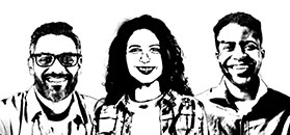The illumination of the internet of things started in the 1830s when the first telegraph that used wireless voice transmission was made and continued to the 1900s, when the first wireless radio was built. In the 1950s, the development of computers began which led to the introduction of APRANET, an independent service provider.
In the 1980s, APRANET was initialised for public use, which led to the development of what is known today as the internet, the core component of IoT. To provide information for IoT, in 1993, the US Department of Defence provided global positioning satellites (GPS) facilitated by 24 satellites and later by individually owned satellites joining the orbit. A significant facilitator of IoT was the assertion, by Steve Leibson, of the Computer History Museum, that internet addresses were enough to facilitate all volumes of data.
Today, IoT has been integrated and used in diverse ways. These include consumer applications, enterprise applications, and law enforcement applications.
Specifically, in consumer applications, IoT has been applied for consumer use through the creation of IoT devices such as smart cars, smart homes, health facilitators and technologies with remote capabilities. Indeed, the use of IoT for consumer purposes has introduced many benefits to users, as seen by the creation of earthquake-proof smart houses, the development of health-facilitating devices that scan the health of users, and improvement of security for households.
IoT application in enterprises is broad and used in all sectors of the economy such as agricultural, manufacturing, law enforcement and disaster management. In agriculture, IoT is used by the creation of smart irrigation schemes that can identify the amount of moisture in the soil and release water as per the required levels. This helps reduce water usage and, in general, enhances production due to improved water levels for the crops. Likewise, the manufacturing industry encompasses IoT through the use of devices that help align bottlenecks of production processes thereby improving efficiency in production. Smart machines have also been developed that minimise the number of errors committed by human workers by performing tasks faster and without exhaustion.
Law enforcement applications of IoT are seen through advanced surveillance that help improve the response rate of enforcers, therefore, reducing the level of crime rate through crime prediction. Intuitively, IoT helps in response and disaster management through sensors that can combine data and predict the happening of events such as earthquakes, which help in general preparation measures including timely evacuations.
In spite of these successes, IoT still faces immense challenges particularly in relation to security, privacy and regulation. For example, the connection of several devices on a single network can sometimes cause security vulnerabilities as a result of the similarity of device setups and functioning. In addition, the issue of privacy arises because most modern devices have smart technology that can record information and/or upload information to cloud servers that can be manipulated thereby causing the loss of personal information. Furthermore, the regulation of interconnected devices is continuously playing catch up due to ever-increasing tech knowledge and the fast pace of technological change.
Clearly, the advent of IoT has led to both positive and negative implications as evidenced by the benefits it provides as well as some of the challenges it presents. However, existing problems and vulnerabilities can be minimised by (1) implementing laws against cyber crime and developing systems that monitor the internet environment and raise alarms at the onset of such crimes, and (2) building technologies such as IoT authentication, encryption, network security, API security and security analytics to safeguard the internet of things.

















